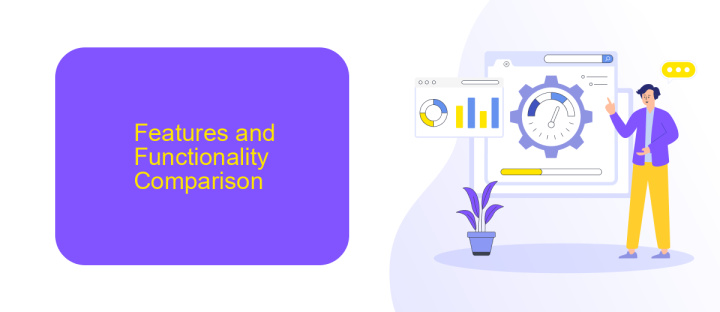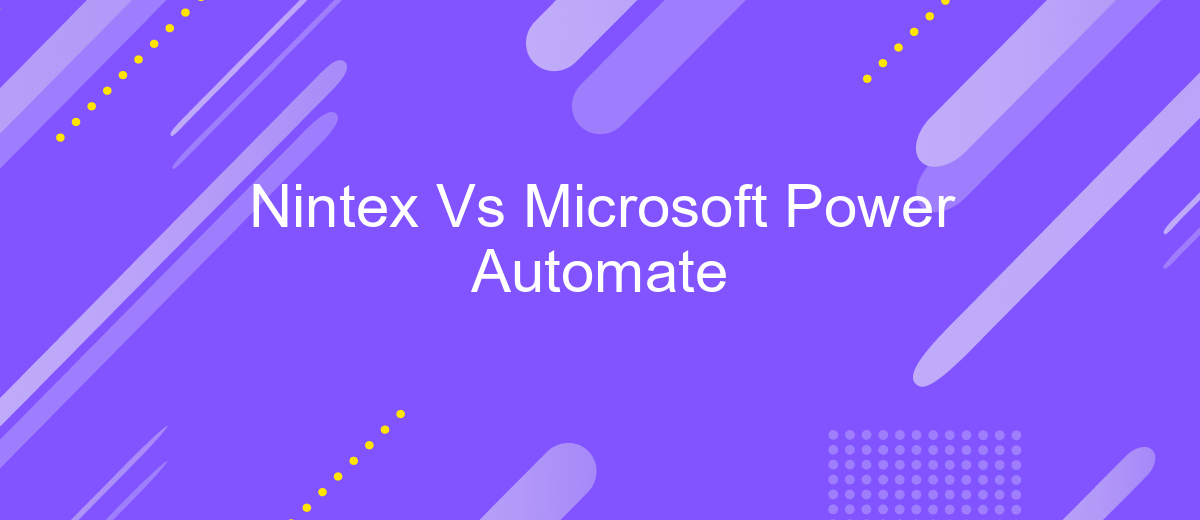Nintex Vs Microsoft Power Automate
When it comes to automating business processes, Nintex and Microsoft Power Automate are two leading solutions that offer robust capabilities. Both platforms aim to streamline workflows, increase efficiency, and reduce manual tasks. In this article, we'll compare Nintex and Microsoft Power Automate, examining their features, ease of use, and overall effectiveness to help you determine which tool best suits your organizational needs.
Introduction
In today's rapidly evolving business landscape, organizations are constantly seeking efficient ways to automate their workflows and streamline operations. Two popular tools that have emerged as leaders in this domain are Nintex and Microsoft Power Automate. Both platforms offer robust capabilities for automating processes, but they cater to different needs and preferences.
- Nintex: Known for its powerful workflow automation and document generation features, Nintex is a preferred choice for enterprises needing complex, custom solutions.
- Microsoft Power Automate: Integrated tightly with the Microsoft ecosystem, this tool is ideal for businesses already leveraging Microsoft 365 and seeking seamless automation within their existing infrastructure.
Choosing between Nintex and Microsoft Power Automate depends on various factors, including integration needs, ease of use, and specific business requirements. For instance, services like ApiX-Drive can be instrumental in facilitating integrations between these automation tools and other business applications, ensuring a smooth and efficient workflow. Understanding the strengths and limitations of each platform will help organizations make an informed decision that aligns with their strategic objectives.
Features and Functionality Comparison

Nintex and Microsoft Power Automate both offer robust features for automating workflows, yet they cater to slightly different needs. Nintex excels in providing a user-friendly interface with drag-and-drop capabilities, making it accessible for users with minimal technical expertise. It offers advanced document generation, process mapping, and robotic process automation (RPA) features. On the other hand, Microsoft Power Automate integrates seamlessly with the Microsoft ecosystem, providing powerful automation options within Office 365, Dynamics 365, and other Microsoft services. Its AI-driven features and extensive library of pre-built connectors make it a versatile tool for complex automation tasks.
When it comes to integration capabilities, both platforms offer extensive options, but Microsoft Power Automate has a slight edge due to its deep integration with Microsoft's suite of products. Nintex, however, compensates with its strong third-party integrations and partnerships, such as with ApiX-Drive, a service that simplifies the integration process between various applications and services. ApiX-Drive allows users to connect Nintex with numerous other platforms effortlessly, enhancing its utility in diverse business environments. Therefore, the choice between the two may come down to specific business needs and existing technological ecosystems.
Pricing and Licensing

When comparing Nintex and Microsoft Power Automate, pricing and licensing are critical factors to consider. Both platforms offer flexible pricing models to cater to various business needs, but they differ in structure and cost-effectiveness.
- Nintex: Nintex provides a subscription-based pricing model, which can be tailored based on the number of workflows and users. They offer different plans, including Standard, Enterprise, and custom solutions for large enterprises.
- Microsoft Power Automate: Microsoft Power Automate follows a per-user, per-month pricing model. They offer several plans, including a free tier, a per-flow plan, and premium plans that provide advanced features and higher limits on automation runs.
Choosing between Nintex and Microsoft Power Automate depends on your specific requirements and budget. For businesses looking to integrate multiple services and streamline workflows, tools like ApiX-Drive can further enhance the capabilities of either platform by providing seamless integration solutions. This allows for more efficient automation and better resource management.
Integration and Extensibility

Integration and extensibility are critical when evaluating workflow automation tools. Nintex offers a robust set of connectors and APIs that allow seamless integration with various third-party applications, including CRM systems, databases, and cloud services. This flexibility ensures that businesses can streamline their operations without disrupting existing workflows.
Microsoft Power Automate, on the other hand, leverages the extensive ecosystem of Microsoft products. It provides native integration with Office 365, Dynamics 365, and Azure, making it an ideal choice for organizations already invested in the Microsoft ecosystem. Additionally, Power Automate supports a wide range of third-party connectors, enhancing its versatility.
- Nintex: Extensive third-party connectors and APIs.
- Power Automate: Native Microsoft ecosystem integration and numerous third-party connectors.
- ApiX-Drive: Facilitates easy integration setup for both Nintex and Power Automate.
Both Nintex and Microsoft Power Automate offer strong integration and extensibility features, but the choice largely depends on the existing technology stack and specific business needs. Utilizing services like ApiX-Drive can further simplify the integration process, ensuring that both platforms can be tailored to meet unique organizational requirements.
Conclusion
In conclusion, both Nintex and Microsoft Power Automate offer robust solutions for automating workflows and enhancing productivity. Nintex stands out with its user-friendly interface and powerful form-building capabilities, making it an excellent choice for organizations that prioritize ease of use and rapid deployment. On the other hand, Microsoft Power Automate excels in its seamless integration with the broader Microsoft ecosystem, providing a more cohesive experience for businesses already invested in Microsoft products.
When deciding between the two, it is essential to consider your organization's specific needs and existing technology stack. Additionally, integrating third-party services like ApiX-Drive can further streamline your workflow automation by connecting various applications and services effortlessly. Ultimately, the best choice will depend on your particular requirements, budget, and long-term strategic goals.


FAQ
What are the main differences between Nintex and Microsoft Power Automate?
Which platform is easier to use for beginners?
Can both Nintex and Microsoft Power Automate integrate with third-party applications?
How do the pricing models of Nintex and Microsoft Power Automate compare?
What options are available for implementing and customizing these automation platforms?
Time is the most valuable resource for business today. Almost half of it is wasted on routine tasks. Your employees are constantly forced to perform monotonous tasks that are difficult to classify as important and specialized. You can leave everything as it is by hiring additional employees, or you can automate most of the business processes using the ApiX-Drive online connector to get rid of unnecessary time and money expenses once and for all. The choice is yours!

